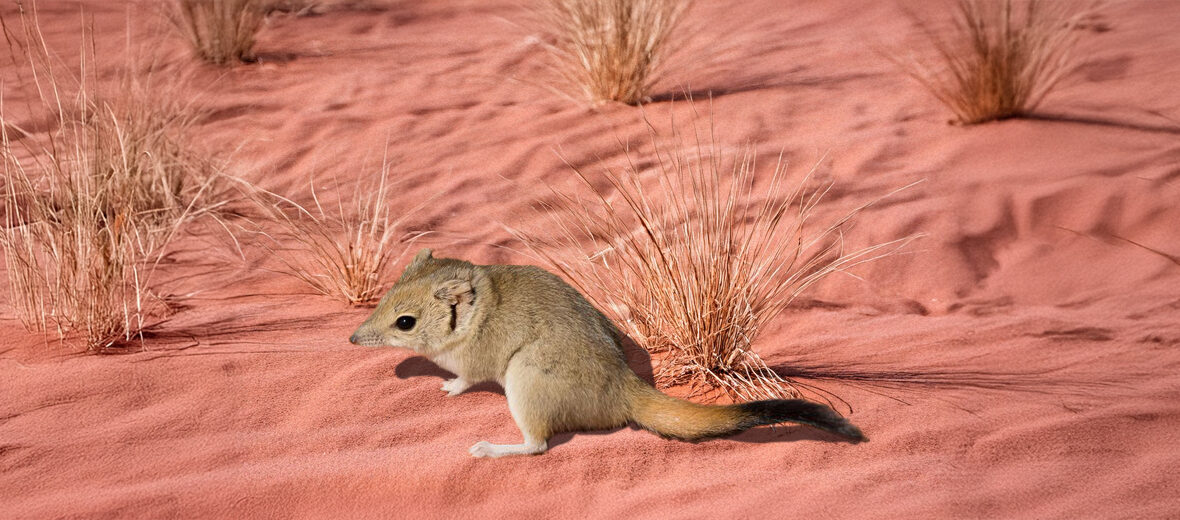
The brush-tailed mulgara is a carnivorous Australian marsupial found in the north-western, central, and south-western areas of the arid zone of Australia. While these marsupials face the threats of habitat loss and destruction at the hands of grazing camels, cattle, and rabbits, as well as fires and mismanaged fire management regiments; predation by introduced species; and climate change, which can cause droughts and flooding, these critters are abundant enough to be listed as Least Concern by the IUCN. Their population trend is listed as unknown at this time.
First the Stats…
Scientific name: Dasycercus blythi
Weight: Up to 4.23 ounces
Length: Up to 6.7 inches, plus up to a 3.9 inch tail
Lifespan: Up to 5 years
Now on to the Facts!
1.) While once widespread and quite common throughout the central deserts of Australia, a decline has been observed since the 1930s, resulting in a much more fragmented distribution.
2.) A wide range of invertebrates (primarily beetles), frogs, reptiles, and smaller mammals are all on the menu.
3.) Their ability to be flexible with their diet aids in their survival.
4.) Populations consistently decline during the winter and spring, most likely due to decreased food during the winter season, reducing available food for potentially gravid (pregnant) females that would need to feed their young, and a reduction of available males due to aggressive competition for access to the females earlier that year.
5.) Large increases in populations can be seen after large rainfall events, which are thought to come from the mulgara’s competition with small rodent population explosions following these rainfalls.
But wait, there’s more on the brush-tailed mulgara!
6.) Unlike other dasyurids (marsupials), males don’t die after breeding.
7.) Females undergo up to a 48 day gestation (pregnancy) that yields up to 6 joeys.
Did you know…?
These marsupials store fat in their tails, and at times the base of their tail can measure up to .63 inch wide.
8.) Joeys suckle for up to 15 weeks before leaving the care of their mother.
9.) Burrows of up to 1.64 feet are routinely constructed to avoid the heat and predation.
10.) Feral cats as well as red foxes routinely prey on brush-tailed mulgaras.
Now a Short Brush-Tailed Mulgara Video!
This video talks about mulgaras in general.
Be sure to share & comment below! Also, check out the Critter Science YouTube channel. Videos added regularly!

Want to suggest a critter for me to write about? Let me know here.
Some source material acquired from: Wikipedia & IUCN



